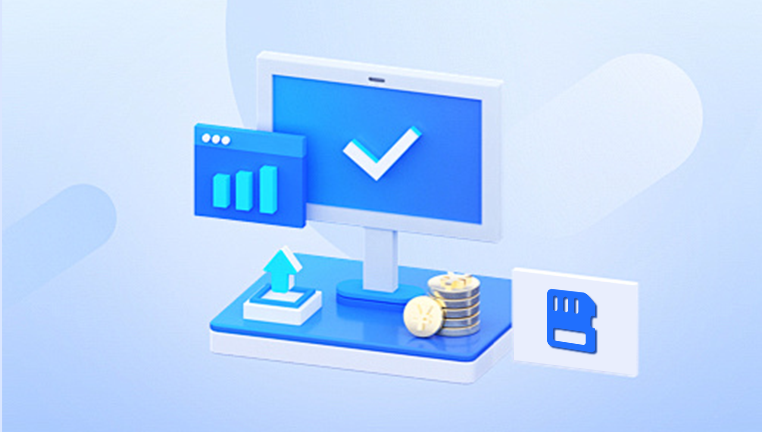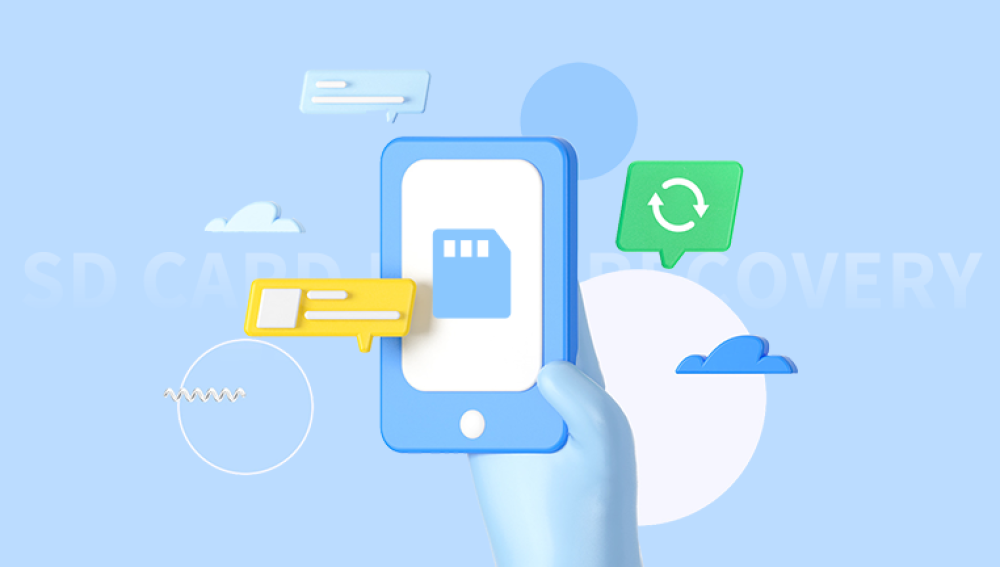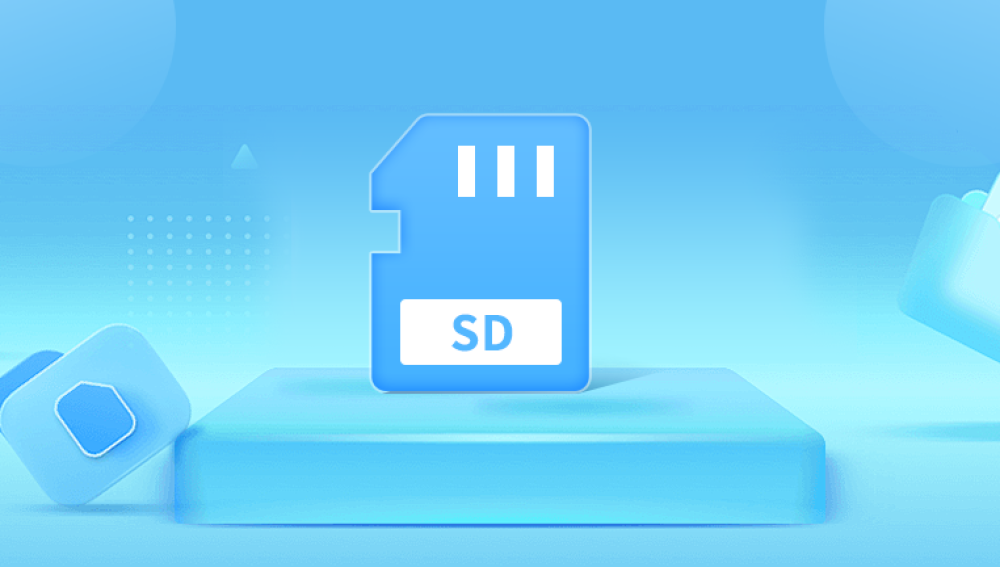They’re widely used in cameras, smartphones, drones, tablets, and other electronic devices. But what happens when valuable files are deleted from your SD card, either accidentally or due to corruption? Panic often sets in, especially if those files are irreplaceable.
Thankfully, retrieving deleted files from an SD memory card is entirely possible, provided you act quickly and use the right tools.
Chapter 1: Common Causes of File Deletion from SD Cards
Before you recover your files, it’s helpful to understand what might have caused the loss. Here are some of the most common reasons:

1.1 Accidental Deletion
The most frequent cause—files can be mistakenly deleted when managing data or formatting the card.
1.2 SD Card Corruption
SD cards may get corrupted due to improper ejection, file system errors, power failures, or virus attacks.
1.3 Formatting Errors
Accidentally formatting the card, especially without backups, can wipe all stored data.
1.4 Physical Damage
Although more severe, damage to the card can lead to unreadable or lost data.
1.5 Bad Sectors
Over time, SD cards may develop bad sectors, making parts of the data inaccessible.
Understanding these reasons helps you prevent data loss in the future—and sometimes, the cause affects which recovery method will work best.
Chapter 2: Is Recovery Possible?
Yes—SD card file recovery is possible, even after deletion or formatting. Here’s why:
When a file is deleted, it’s not immediately erased. Instead, the file’s reference is removed, and the space is marked as available for reuse.
Until new data overwrites that space, recovery software can retrieve the deleted files.
Important Tip:
Stop using the SD card immediately after file deletion to avoid overwriting the lost data.
Chapter 3: First Steps Before Recovery
Before diving into recovery tools, take these precautionary steps:
3.1 Remove the SD Card Safely
Use the “Eject” or “Safely Remove” option before unplugging the card from your device.
3.2 Avoid Writing New Data
Do not take new photos, record videos, or transfer files to the SD card.
3.3 Use a Card Reader
Insert the SD card into a reliable card reader and connect it to your PC or laptop.
3.4 Check the Recycle Bin
If you deleted the files while the SD card was connected to a Windows PC, check the Recycle Bin. You might be able to restore the files directly.
Chapter 4: Use File Recovery Software
The most effective method is to use data recovery software designed to restore deleted files from memory cards.
4.1 Why Use Drecov Data Recovery?
Drecov Data Recovery is a trusted and robust tool that helps recover deleted, lost, or inaccessible files from SD cards and other storage devices. Key features include:
Supports all file types: photos, videos, documents, etc.
Compatible with all major SD card brands.
Deep scanning engine to locate buried data.
Easy-to-use interface for beginners.
Chapter 5: How to Retrieve Deleted Files Using Drecov Data Recovery
Here’s a step-by-step guide on how to use Drecov Data Recovery effectively:
Step 1: Download and Install Drecov Data Recovery
Visit the official website, download the latest version, and install it on your computer.
Step 2: Connect the SD Card
Use a card reader or insert the card into your laptop’s SD slot.
Step 3: Launch the Program
Open Drecov Data Recovery. It will automatically detect your SD card.
Step 4: Choose the SD Card
Select the SD card from the list of detected devices.
Step 5: Scan for Deleted Files
You’ll be given the option of a Quick Scan or Deep Scan:
Quick Scan: Faster, suitable for recently deleted files.
Deep Scan: Slower, more thorough—ideal for formatted or corrupted cards.
Step 6: Preview the Files
After the scan, browse through the recoverable files. Use filters to find file types like .jpg, .mp4. .docx, etc.
Step 7: Recover and Save
Select the files you wish to recover, then choose a safe location on your computer (not the SD card) to save them.
That’s it! You’ve successfully retrieved your deleted files.
Chapter 6: Alternative Recovery Methods
While software-based recovery is most reliable, here are a few other methods that might work:
6.1 Check Cloud Backups
Photos and documents may be backed up to:
Google Photos
iCloud
OneDrive
Dropbox
6.2 Use File History or Windows Backup
If the SD card was previously used on a PC, and File History or Windows Backup was enabled, you might find earlier versions of files.
6.3 Try CMD (Command Prompt) on Windows
For those comfortable with command line tools:
Connect the SD card.
Open Command Prompt (Admin).
Type:
bash
CopyEdit
chkdsk X: /f
(Replace X: with your SD card’s drive letter.)
This checks and fixes file system errors and sometimes reveals hidden files.
Chapter 7: Specialized Help for Damaged Cards
If your SD card is physically damaged or unreadable even by the recovery software, consider these options:
7.1 Professional Data Recovery Services
Experts can retrieve data from:
Bent, cracked, or water-damaged cards.
Cards not recognized by computers.
However, these services can be expensive, so evaluate the value of the lost files before proceeding.
7.2 Manufacturer Warranty and Support
Some SD card brands offer limited data recovery services or replacement if the card is defective.
Chapter 8: Tips to Prevent Future Data Loss
Being proactive can save you from the stress of file recovery. Follow these tips:
8.1 Regular Backups
Use cloud storage or external drives to back up your SD card data regularly.
8.2 Safely Eject SD Cards
Never remove the card while the device is on or writing data.
8.3 Use Quality SD Cards
Opt for reliable brands like SanDisk, Samsung, Kingston, or Lexar.
8.4 Avoid Using One Card for Multiple Devices
Switching devices without formatting can increase corruption risk.
8.5 Run Periodic Health Checks
Use tools like CrystalDiskInfo to monitor card health and anticipate failures.
Chapter 9: Frequently Asked Questions (FAQs)
Q1: Can I recover files from a formatted SD card?
Yes, deep scanning with Drecov Data Recovery or similar tools can recover files from formatted cards.
Q2: Is SD card data recovery free?
Some tools offer free recovery for a limited number of files. Full recovery usually requires a paid version.
Q3: How long does recovery take?
It depends on the card size and type of scan. Deep scans for 64GB+ cards can take over an hour.
Q4: Will recovered files be 100% intact?
Most recovered files are fully usable, but corruption or overwriting can affect some.
Q5: Can I recover files from a corrupted SD card?
Yes, as long as the system can detect the card, recovery software can usually retrieve files.




